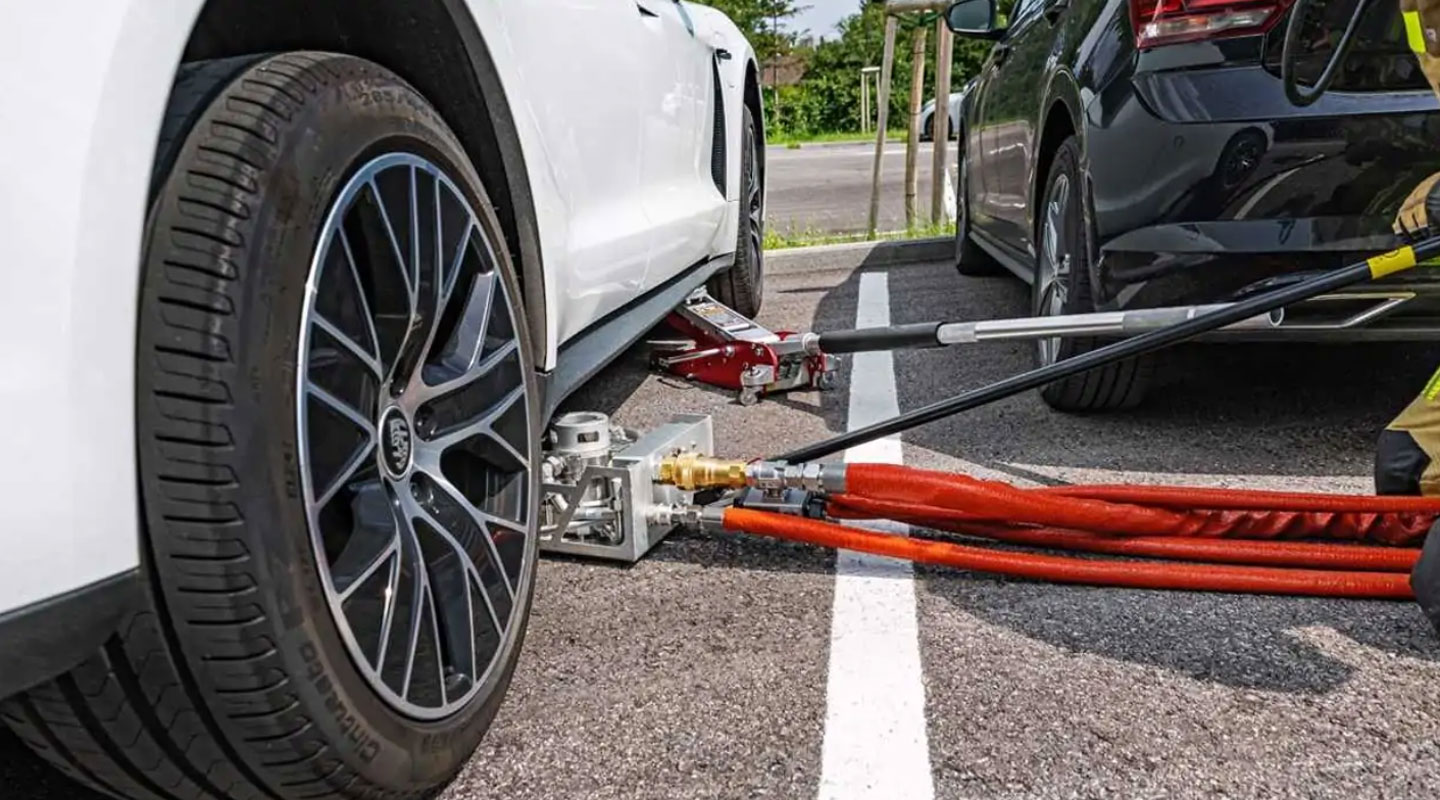
Perhaps the most concerning issue with electric vehicles today in a mishap is a cut of the battery cells. At the point when battery cells are penetrated, combustible materials utilized in the development of current lithium-particle batteries can overheat and burst into flames. It’s undeniably challenging to extinguish a battery fire, and we’ve seen local groups of fire-fighters make some outrageous moves previously. In certain occurrences, the whole vehicle has been set into a huge tank of water.
An organization called Rosenbauer has dispatched another piece of gear for firemen, explicitly for battling battery fires in current electric vehicles. The hardware is an EV-explicit fire quencher that has a dousing unit and a working unit. The plan of the fire douser permits firemen to flood the battery cells with huge loads of water at a protected distance of around 25 feet away.
The manner in which the quencher works is that an administrator would situate the douser unit under the electric vehicle. The smothering mandrel is crashed into the battery and can convey sufficient water to adequately cool it and stop the fire. Not exclusively is the framework adequately strong to infiltrate the extreme metal securing battery cells, but at the same time it’s intense enough that assuming the EV is its ally or rooftop, the mandrel can enter through the inside, top, or truck to cool the battery cells.
Rosenbauer has tried the EV fire douser on different battery plans, including cells using pocket, kaleidoscopic, or round development. The framework has likewise been tried with local groups of fire-fighters setting up that it is viable with their current firefighting strategies and assets. The maker says their stifling framework is truly outstanding and most inventive ways of battling the danger of EV battery fires accessible. As of now, the EV firefighting framework is accessible to be preordered, with units transporting in mid 2022.
The maker says that once the framework enters the battery cells and cools them adequately, the vehicle is fit to be moved. It’s planned so that water fills the battery lodging giving proficient cooling to stop warm out of control and stifle the fire. Furthermore, the framework can work from the typical tension of the water supply. That implies no extra siphons are needed to produce the tension required for the gadget to work.
One more large advantage of the framework is that it is planned so the douser can stay in the battery during transport and in the quarantine region. It has been noticed on different occasions previously, especially during crash testing, that occasionally batteries don’t burst into flames immediately; it can require days before the fire starts. In any case, with the quencher mandril installed in the battery, it very well may be effortlessly doused again assuming the fire erupts during transport.
The quencher framework was created in Germany, yet apparently, it’s accessible around the world. With the significant push towards moving the majority to electric vehicles, genuine mishaps including electric vehicles will unquestionably increment. As Chevrolet has seen, surrenders in battery assembling can cause fires without a mishap by any means. The automaker has seen no less than twelve flames in its reviewed Bolt electric vehicle there were completely brought about by an assembling imperfection on the sequential construction system at maker LG. The review to fix those issues and supplant the battery packs in each Bolt created up until this point will cost LG billions of dollars.



